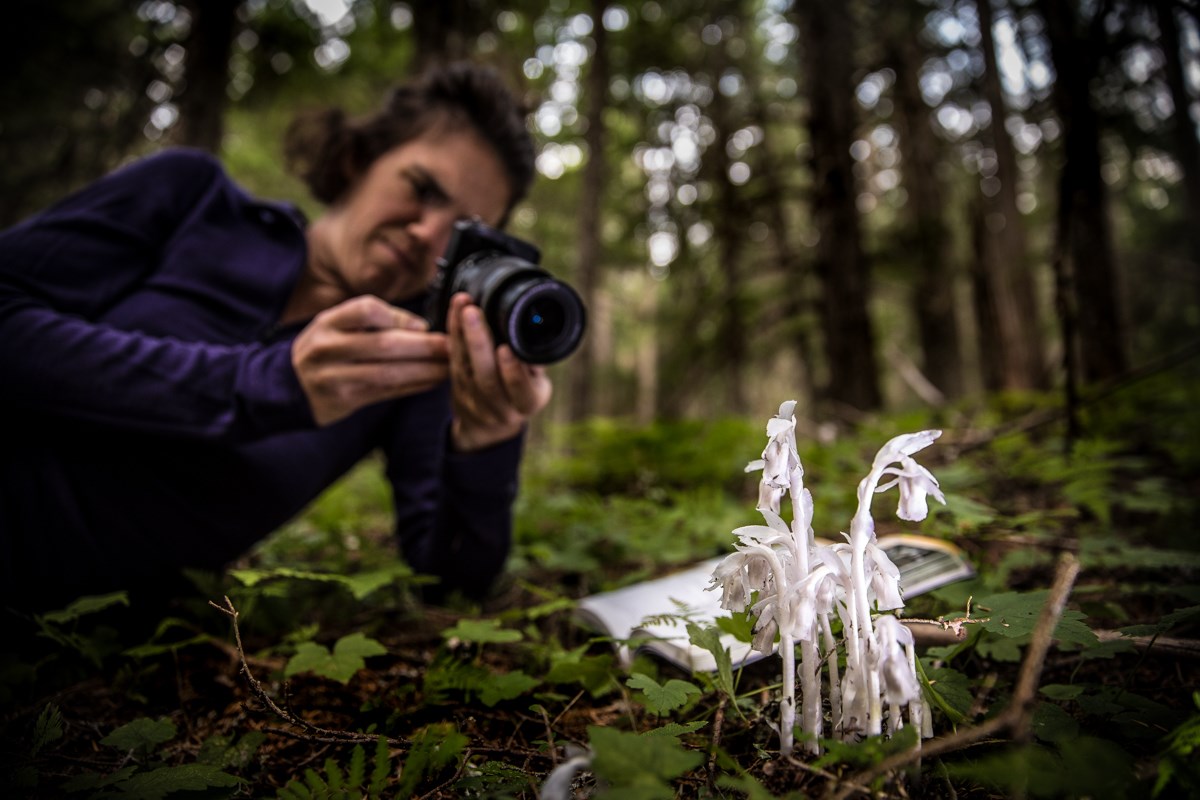
NPS Photo As the meeting ground of four major floristic provinces, Glacier's ecosystem supports a diverse array of plant species and plant communities. Many species and plant communities reach the edge of their range here. Glacier Park has 30 species that are "endemic" to the region, those with ranges limited exclusively to the northern Rocky Mountains. All but one of these occur in cold, open areas characteristic of harsh, post-glacial environments. Many are relics of the post-glacial age or occur here because the diverse combination of environmental conditions create unique micro-habitats. Three major North American watersheds arise from Glacier National Park (Arctic, Atlantic and Pacific). Two climate zones (Pacific Maritime and Prairie/Arctic) are separated by the Continental Divide. Biomes range from the lower elevation pacific cedar-hemlock forest to the high alpine tundra. Plant varieties change somewhat north to south as well because the north half of the park is in the rainshadow of the Whitefish Range. The cedar-hemlocks give way to drier Douglas fir and lodgepole pine forests in the North Fork, Flathead River drainage. Floristic Provinces
Plant Cover The Park's plant cover is roughly 33% moist coniferous forest, 29% barren or sparsely vegetated rock/snow/ice, 16% dry coniferous forest, 8% dry meadow and prairie, 6% deciduous forest (primarily aspen and black cottonwood), 5% wet meadow or fen, and 3% lake surface water (with aquatic plants occurring in the shallower zones).
West of the Divide
Moist, temperate conditions on the west side of Glacier Park have allowed the eastern-most extension of Pacific cedar-hemlock forest to develop in the Lake McDonald Valley. Moisture from the Pacific coast condenses during its rise to the Continental Divide. Rainfall ranges from an average of 23 inches in the park's driest locations along the northeast and northwest edges of the park to 30 inches at West Glacier. Precipitation in excess of 100 inches may fall in isolated cirques near the Continental Divide.
East of the Divide
On the east side of the park, dry chinook winds sculpt trees along the high ridges while calmer conditions prevail in the aspen groves below. The difference in rainfall is not extreme, but the desiccating winds have made the plant communities very different on the east side. The dark, ancient cedar/hemlock forests of the west side are a stark contrast to the more open forests, glades and grasslands of the east side. Plant varieties change somewhat north to south as well because the north half of the Park is in the rainshadow of the Whitefish Range. The cedar-hemlocks give way to drier Douglas fir and lodgepole pine forests in the North Fork, Flathead River drainage.
Plant Groups Glacier National Park is home to at least 1,132 species of vascular plants (those containing vessels that conduct water and nutrients). There are 88 annual or biennial plant species and 804 types of perennial herbs. Included in these numbers are 127 non-native species. Sixty-seven vascular and 42 non-vascular plant species found in Glacier Park are listed as "sensitive" by the State of Montana. 
Grasses
Though only a small percentage of park vegetation, grasses are an important source of food and habitat for park wildlife. 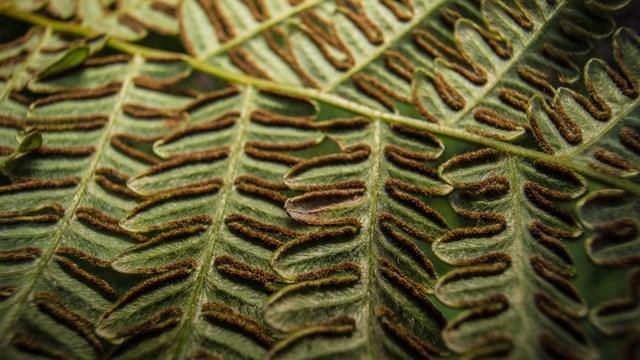
Ferns
There are 62 species of ferns and their allies in Glacier National Park. 
Trees and Shrubs
There are 20 different tree species and 93 woody shrubs or vines. 
Wildflowers
A walk through a meadow in summer may lead you to believe there are an infinite number of wildflowers in Glacier. 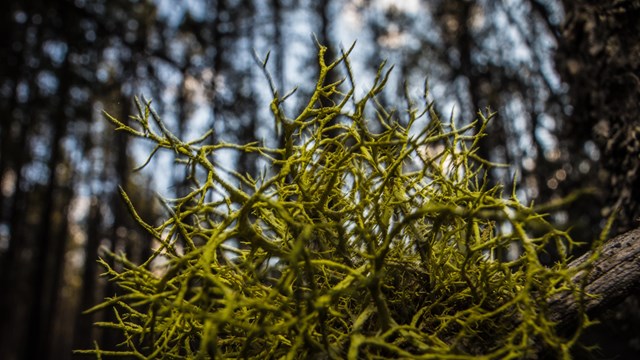
Lichens
Fungus and algae combine to form lichen. 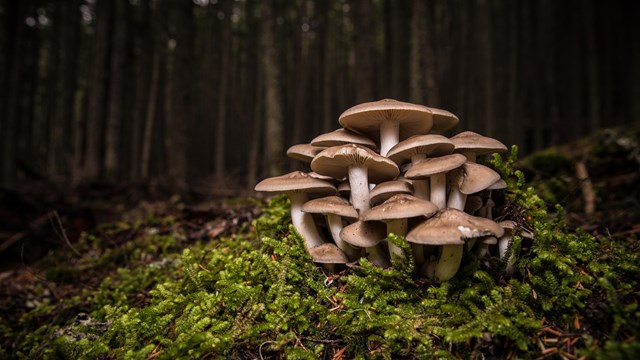
Mushrooms and Fungi
There are hundreds species of fungi in Glacier, maybe thousands. 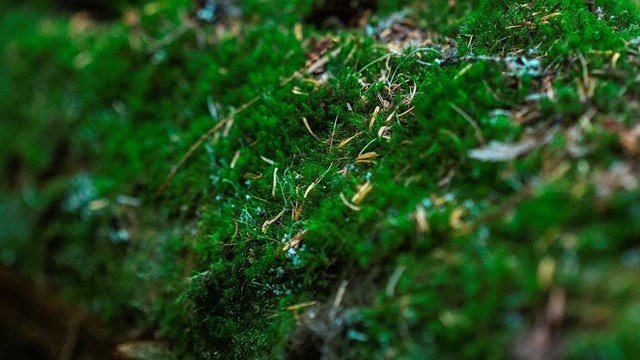
Mosses and Liverworts
The park has at least 855 species of mosses and lichens. |
Last updated: November 9, 2018
